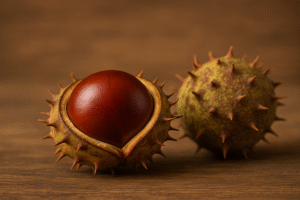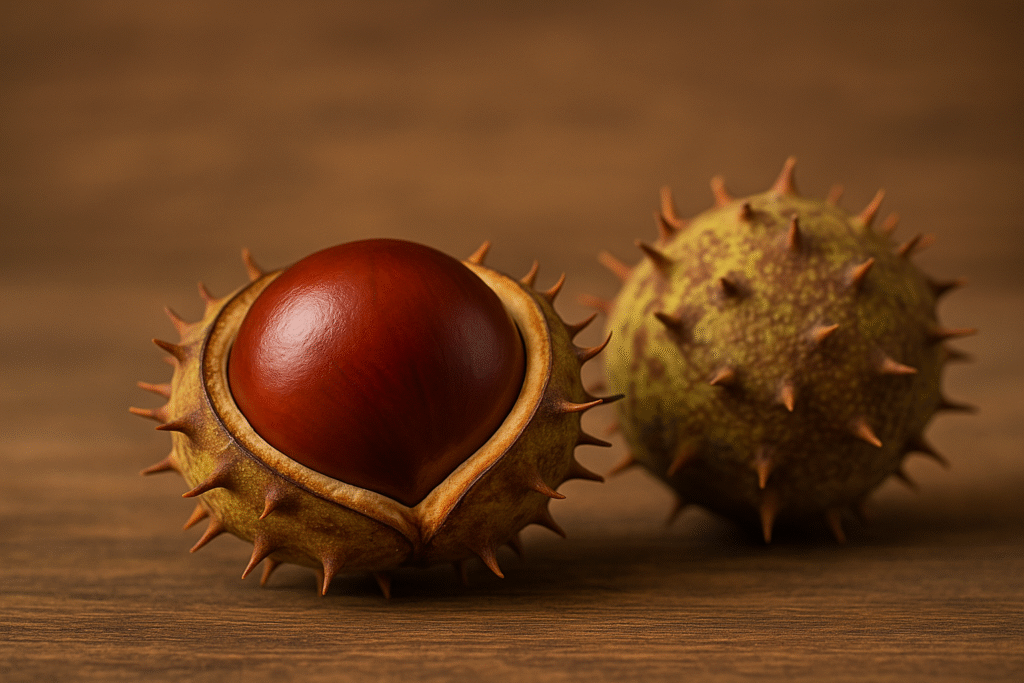The monkey nut is a fascinating and relatively unknown fruit in many parts of the world, yet it is highly valued for its medicinal properties and nutritional benefits. Found mainly in tropical regions, especially in the Amazon, it is consumed in various ways and offers more than just a unique flavor — it carries a long history of traditional use and modern health applications.
In this article, you will discover seven essential facts about the monkey nut that will help you understand why it’s gaining attention among health enthusiasts and researchers.
1. What Is the Monkey Nut?
The monkey nut, also known scientifically as Aesculus hippocastanum in some contexts, or referring to specific Amazonian species, is a seed encased in a spiky, round shell.
Its curious name comes from the fact that monkeys often feed on it in the wild, playing an important role in seed dispersal.
Although it resembles other edible nuts, it has unique characteristics in taste, appearance, and composition.
-
Origin: Tropical and subtropical regions, with a strong presence in the Amazon.
-
Color: Reddish-brown.
-
Shape: Smooth, round, and glossy.
Depending on the species, the monkey nut can be edible or used strictly for medicinal purposes.
2. Recognized Medicinal Properties
One of the main reasons the monkey nut has gained popularity is its rich composition of antioxidants, flavonoids, and saponins.
Research suggests that it may help improve circulatory health by strengthening veins and blood vessels, making it popular for treating varicose veins and poor blood circulation.
Commonly mentioned medicinal benefits include:
-
Supporting healthy blood circulation
-
Providing anti-inflammatory effects
-
Helping reduce swelling and fluid retention
-
Relieving muscle and joint pain
⚠ Depending on the variety, raw consumption can be toxic, so proper preparation is essential for safe use.
3. Traditional Use in Folk Medicine
In folk medicine, especially within Amazonian and riverine communities, the monkey nut has been used for generations.
It is typically prepared as tea, tinctures, ointments, or medicinal oils.
-
Ointments: Applied topically to relieve muscle pain and rheumatism.
-
Tinctures: The seed is soaked in alcohol and used in small doses.
-
Teas: Prepared from dried seeds or bark, often used to promote vascular health.
These remedies are deeply rooted in cultural traditions and are still widely practiced today.
4. Nutritional Value and Culinary Uses
While certain species are not safe for direct consumption due to the presence of natural toxins, edible varieties are a valuable source of healthy fats, plant-based protein, and essential minerals such as magnesium and potassium.
Ways it can be consumed (for edible species):
-
Roasted and ground into flour for bread and cakes
-
Mixed into regional sweets and desserts
-
Used in natural energy drinks
The edible monkey nut is considered an excellent source of long-lasting energy, making it ideal for physically active individuals.
5. Sustainability and Conservation
The harvesting of monkey nuts must be done in a sustainable way to protect biodiversity.
Overharvesting can harm not only the plant population but also the wildlife that depends on it for food.
Sustainable practices include:
-
Controlled and seasonal harvesting
-
Supporting reforestation programs
-
Buying from certified community-based producers
By choosing sustainably sourced monkey nuts, consumers directly support environmental conservation and local livelihoods.
6. How to Prepare Monkey Nuts Safely
If you’re interested in trying the monkey nut, it’s crucial to know the proper preparation methods.
Some species must be boiled or roasted to neutralize naturally occurring toxic compounds.
Basic preparation steps (for edible species):
-
Wash the nuts thoroughly.
-
Boil them in water for 20–30 minutes.
-
Drain and dry them under the sun or in an oven.
-
Eat them as they are or incorporate them into recipes.
⚠ Warning: Never eat the monkey nut raw unless you are certain the species is safe for consumption.
7. Interesting Facts About the Monkey Nut
-
In some cultures, it is used as a good luck charm.
-
In Europe, Aesculus hippocastanum extract is widely used in herbal medicine for varicose vein treatment.
-
The tree can grow up to 20 meters tall.
-
Monkeys play a key role in spreading its seeds.
-
It has great potential for export and use in cosmetics.
Final Thoughts
The monkey nut is a unique and valuable fruit with a wide range of uses, from nutritional benefits to traditional remedies and even cultural symbolism.
Whether you’re interested in it for its health properties, culinary applications, or ecological role, it’s a remarkable example of nature’s diversity.

Take Your Outdoor Experience to the Next Level
Enjoy the convenience of the Spopal 6000mAh Portable Camping Shower, perfect for hiking, travel, camping, and even washing your pets. With 4 spray modes, intelligent LED display, and IPX7 waterproof protection, it offers comfort anywhere you go.
Discover the Tropical Charm of the Yellow Shrimp Plant
Learn all about the stunning Justicia brandegeeana Yellow, a unique tropical plant that adds color and life to any garden. Find out its care tips, propagation methods, and how to make it thrive.

